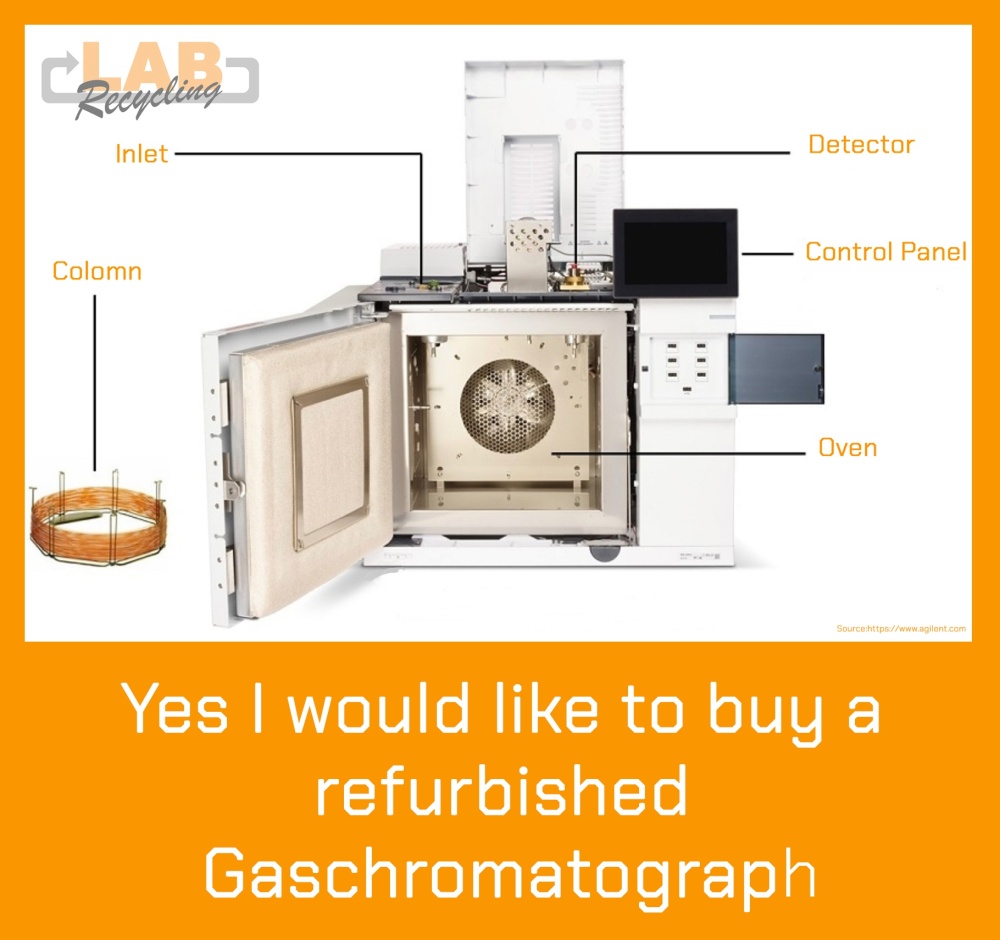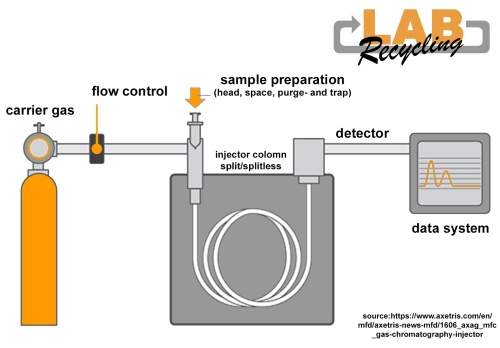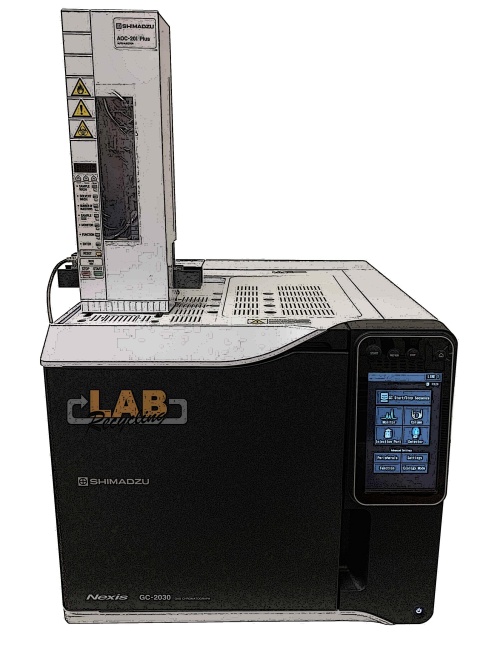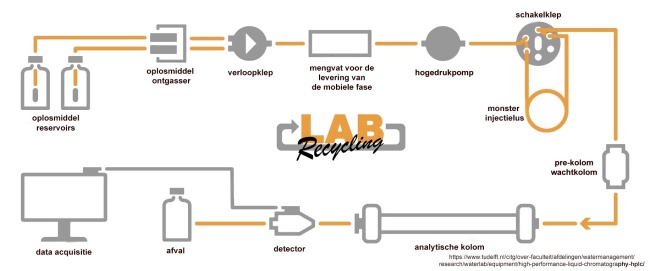On this page you will find more information on a gaschromatograph, also called GC. You use a GC when you want the answer for this question: What does the liquid contain and in what amount?
How does a gaschromatograph (GC) work?
A gaschromatograph is a chemical analysis instrument for separating chemicals in a complex sample. A gas chromatograph uses a flow-through narrow tube known as the column, through which different chemical constituents of a sample pass in a gas stream, this is called carrier gas, also known as 'mobile phase'. At different rates depending on their various chemical and physical properties and their interaction with a specific column filling, called the 'stationary phase'. As the chemicals exit the end of the column, they are detected and identified electronically. The function of the stationary phase in the column is to separate different components, causing each one to exit the column at a retention time.
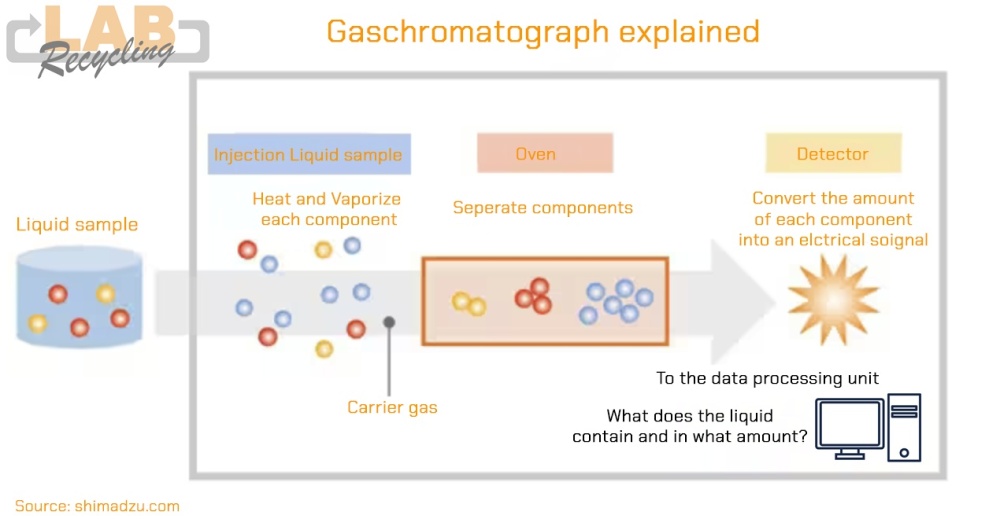
Where can I buy a used or refurbished gaschromatograph?
You can find very good refurbished GC from Agilent at Labrecycling.com.
How does a gaschromatograph looks like?
In a laboratory people use different kind of GC’s. Their are brands like:
Their a three types of gas which you use in the mobile phase in a gaschromatograph
In gas chromatography you have 3 types of gasses you need:
Carrier gas – This is needed for the transfer of the injected sample to the separation column. For example: Nitrogen, helium, or hydrogen
Fuel gas – They support the flame in FID such as Hydrogen.
Zero air – These are the purified air that plays the role of oxidant to support the combustion of flame in the detector. Before being led to the gas chromatographic system.
These 3 are intermixed in the desired proportion.
Gas chromatograph Sample injector
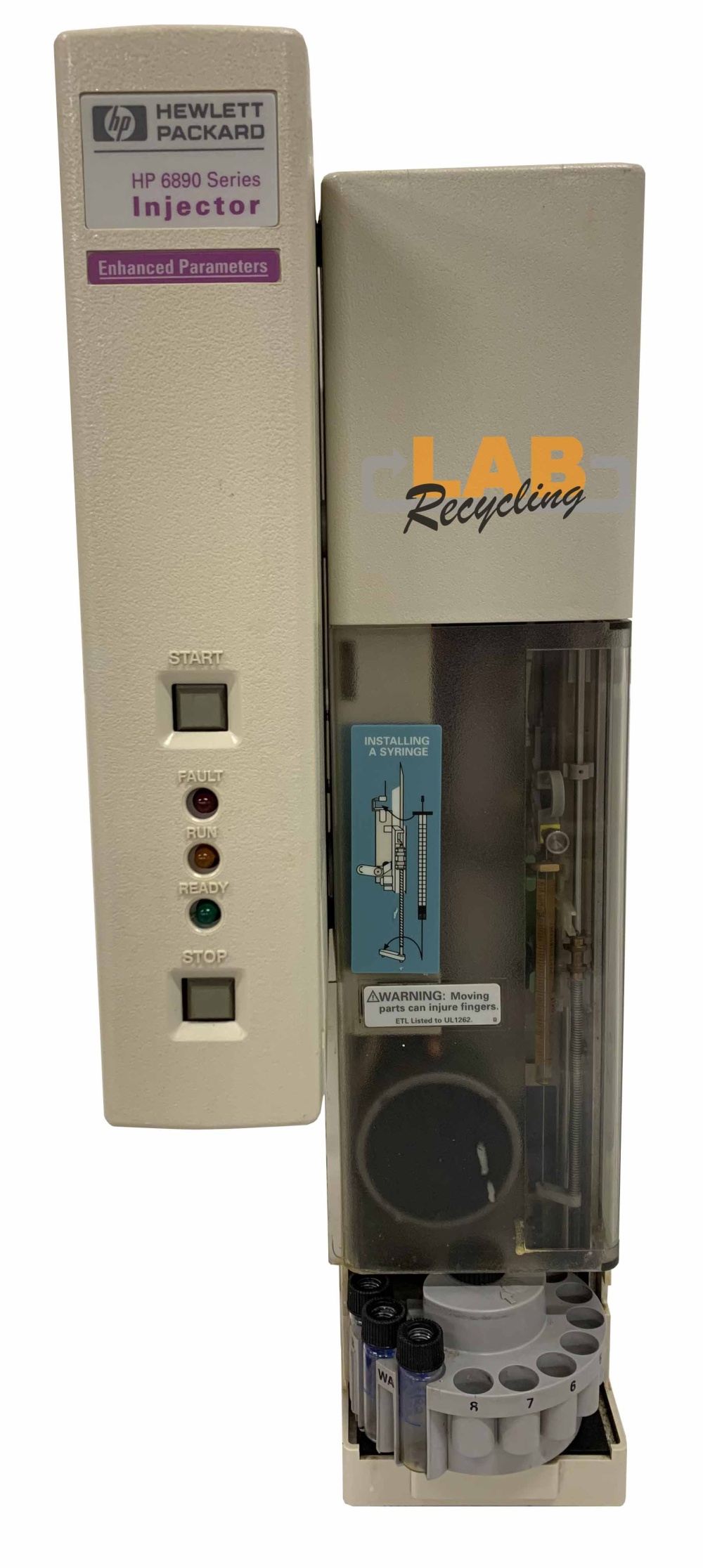 | The injector is a heated block where the sample is injected. Through the carrier gas stream, the sample is spontaneously vaporized and led to the column. With the help of a gas-tight syringe, the liquid sample mixtures are injected whereas, with the help of automated injection valves, the gaseous mixtures are injected. |
Gas chromatograph Column
This is filled with the stationary phase or its walls are covered with a liquid adsorbent. This is done for selective absorbance and retention of the sample components.
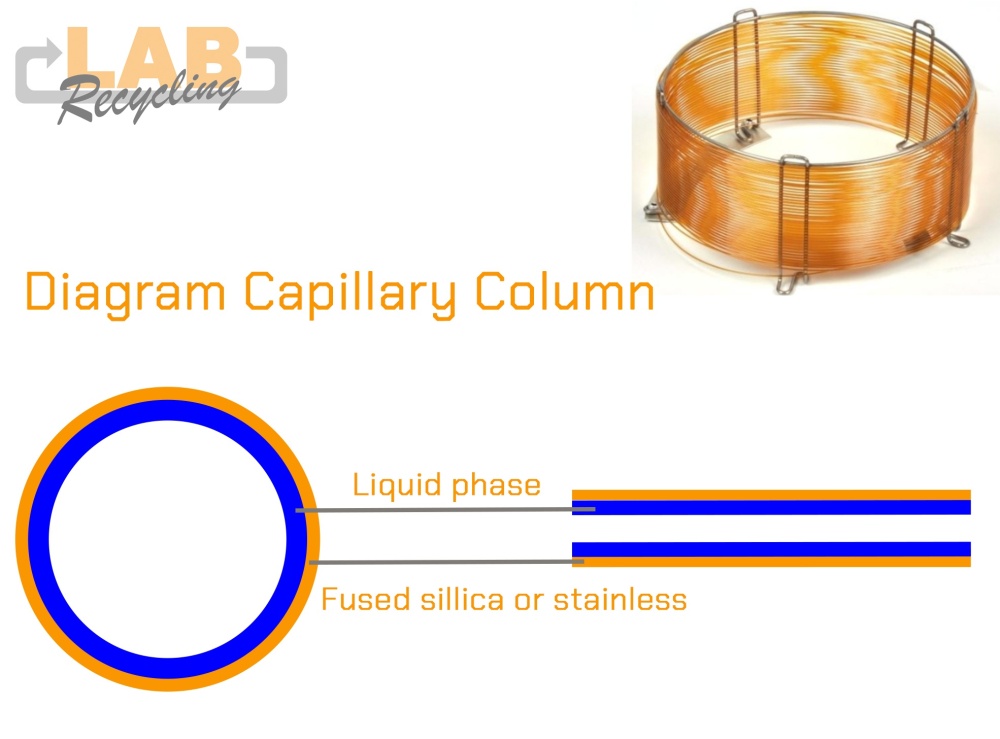
Gas chromatograph Component of a Column – Oven
The column is enclosed by a column oven which is responsible for maintaining a constant temperature during isothermal operation.
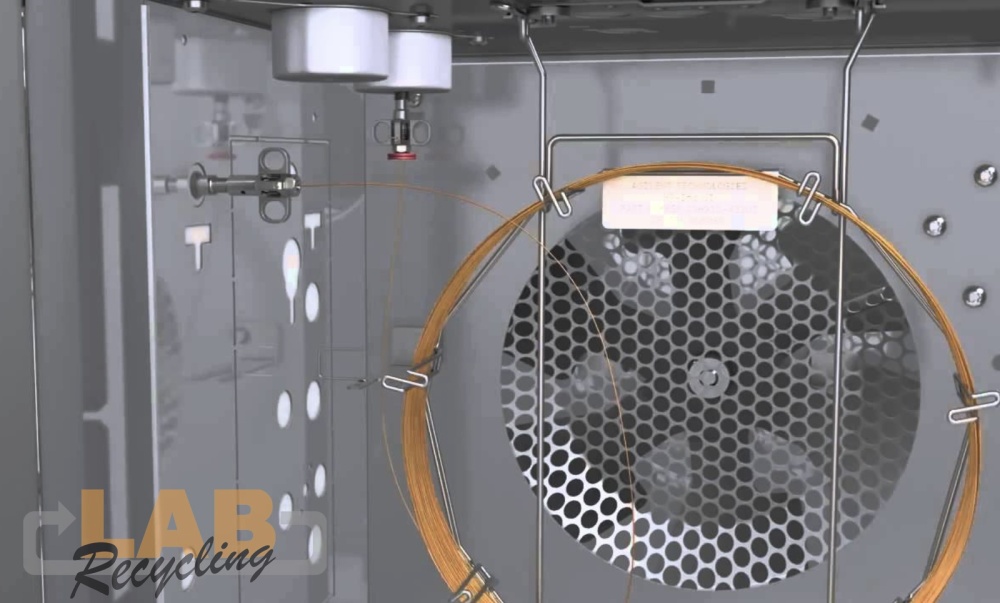
Gaschromatograph Detector
This is employed for the identification and quantification of components. best known are: FID, TCD and ECD.
Data system of a GC
It is a set of dedicated software that provides control over many important operational parameters.

